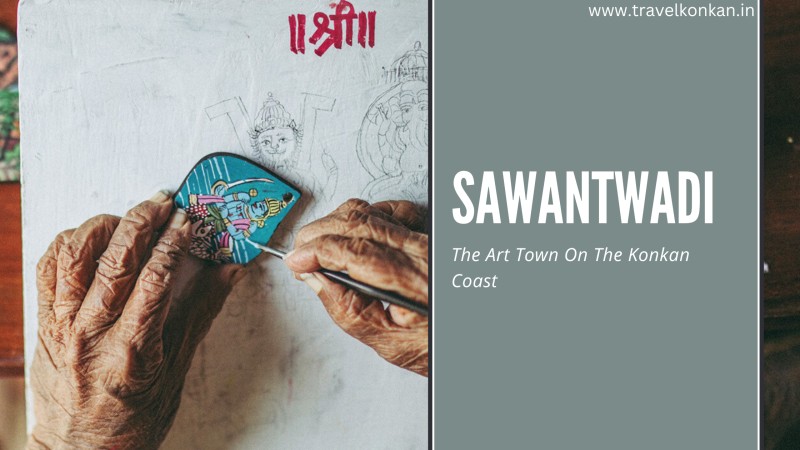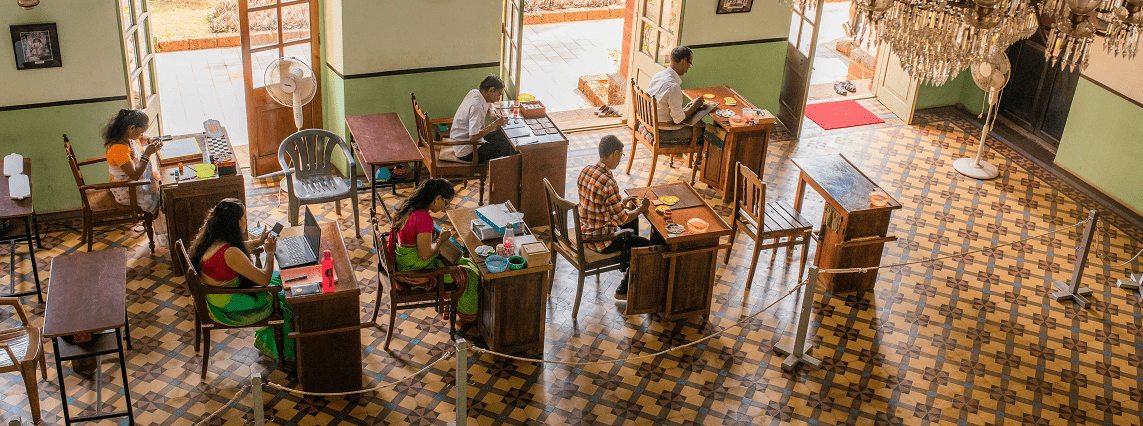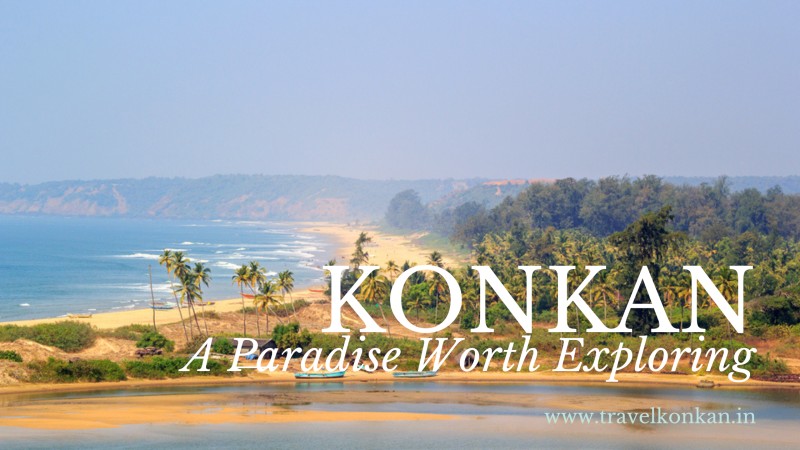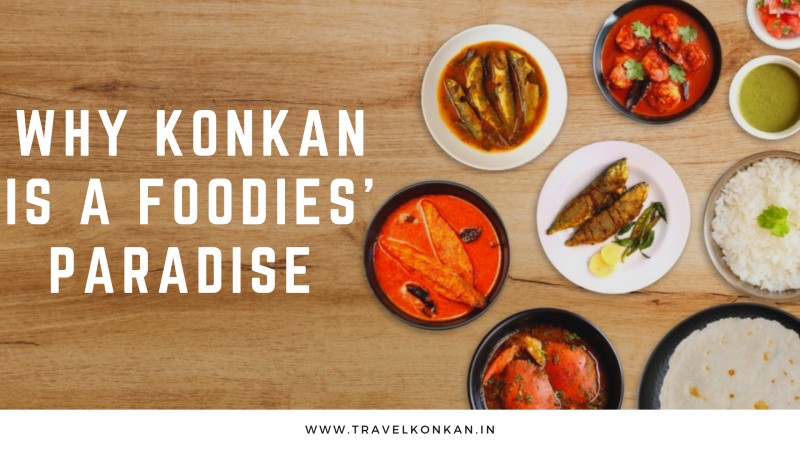Sawantwadi, a land of artists - is the epicentre of many hand-based art forms. Famous for Ganjifa Art and Lacquerware, it is home to many skilled artisans. These art forms were revived by the Royal family and it continues to fuel art enthusiasts world-over.

-
Sawantwadi Palace
-
Palace Museum
-
Moti Talav
-
Art At Sawantwadi Palace
-
Art & Craft Centre
-
Chitrali Gully or Painters Lane in Sawantwadi
-
Shilpagram
-
Shopping At Sawantwadi
1. Sawantwadi Palace
Built by Khem Sawant III during his reign from 1755 – 1803, two-storied palace made of red laterite sits pretty in the middle of a landscaped garden. The architecture combines local and European styles. Today, the palace has been converted into a boutique art hotel offering unique experiences such as a Ganjifa art workshop, a local village lunch, a day at the beach, a visit to the Pinguli village for leather puppetry, and a private picnic experience amidst the Amboli ghats.
The ruling family along with the present Queen-mother H.H. Satwashiladevi still reside in the palace. The Queen takes a keen interest in the growth and sustenance of local arts such as 'Ganjifa Art', Woodwork painting, lacer work which goes back to the 18th century. Workshops are conducted in the palace to train the new generation in there arts. This is major attraction for local and foreign tourists.
 Sawantwadi Palace
Sawantwadi Palace
2. Palace Museum
A part of the palace is turned into a museum. Here you can see various 10-12th CE sculptures in stone. One could spot Brahma, Ganesha, and curiously Rawalnath & Betal statues in the middle of many unidentified ones. There is a genealogy of the Bhonsle clan that ruled from here from the 17th – mid 20th CE on the walls.
There are picture galleries and there is a display of local art. The wood lacquer products like furniture, trays, coasters, boxes, and board games. Some of them are available for sale too.
 Palace Museum
Palace Museum
3. Moti Talav
Nestling in the heart of Sawantwadi is the Moti Talav. The lakeside is a popular recreation centre for the local people. A bridge cuts through the lake and there is a paved pathway running around the waterbody. Lined along its banks are offices and commercial complexes, an old market, hotels and restaurants. On the other side of the lake is the royal palace. The best time to visit the lake is early morning, before the chaotic traffic takes over or in the evening when the illuminated fountains cast a pattern on the water. Boating and other water sports activities are usually available here.
 Moti Talav
Moti Talav
4. Art At Sawantwadi Palace
Sawantwadi is the only remaining place in India where the ancient art of Ganjifa is still practised. The Sawant Bhonsle family is persistent in upholding the art of Ganjifa and Lacquerware art forms. The family currently residing in the Palace are not only trying to uphold what was once revived, but they are also taking Sawantwadi art one step ahead by making it accessible for people from all over. The boutique art hotel is built for people to experience these art forms in its purest forms.

5. Art & Craft Centre
Ganjifa - Ganjifa are playing cards and trace back to its origin in Persia. It was brought down to India by the Mughals in the 16th Century. It is said ‘Ganj’ is a Persian term meaning 'treasure, treasury or hoard' while others suggest it is from the Persian word ‘ganjifeh’ meaning ‘playing cards’. During the 18th and 19th centuries, various schools of this craft were started in Sawantwadi. The revival journey began when H.H Rajesaheb Shivramraje Bhonsle visited the Victoria and Albert Museum in London, he noticed a label reading Sawantwadi Cards. He and his wife, themselves learnt the art from the 80 years old artist Pundalik Chitari who at that time would make 2 sets of Ganjifa for a year. They started Sawantwadi Lacquerwares to revive and promote the art of Ganjifa and Lacquerware. Their objective was to teach this art to the younger generation so that it could be carried forward. Ganjifa designs are characterized by floral and mythological motifs hand-painted in vivid colours on various types of wooden objects. This art form had almost disappeared by the early 20th century but was saved from extinction.

Lacquerware - The craft of lacquerware was introduced in Sawantwadi around the end of the 17th century by the Telangana Brahmins who came from Andhra Pradesh to hold discourses in Dharmashastra with Khem Sawant III, the then-ruler of Sawantwadi. Khem Sawant III was also a patron of arts and music. This craft and the community of artisans, the Chitaris further flourished under the Royal Patronage of the Rulers of Sawantwadi, the Sawant Bhonsles. Beyond wooden furniture and toys, lacquerware has managed to increase its horizon to several other things like board games, chess sets, candlesticks, small dolls, etc. A majority of the artist community still thrives by working and crafting the light fittings and lacquered furniture.

6. Chitrali Gully or Painters Lane in Sawantwadi
If you are visiting Sawantwadi, be sure to visit this market at Chitar Aali. “Chitrali Gully” or “Chitar Aali” is the shopping street in the town. The mind will be amazed to see the linear wooden toys and wooden utensils of different shapes and colors made by many skilled artists and being sold in abundance. Colorful Pats or Chowkis that look like low stools cannot escape your eye with their bright red and yellow base color on which bright parrots are painted. There are fruit baskets with lifelike fruits made of wood. There are board games like Tabalphal. Toys for children in wood and of course there were utility items like spoons and spatulas for the kitchen or acupressure aids. These are the same items that they used to make centuries ago and there is a market for these items.

7. Shilpagram
The village of Shilpagram is one that boasts of arts and crafts, a project sponsored by Government of India. The small place is majorly engaged in its creative business where local producers make and sell handcrafted items. Tourists certainly enjoy visiting Shilpagram as the artists produce these little marvels right before their eyes. So one can view and purchase items like Ganjifa cards, ornate bangle and jewellery boxes, earthen and cultural style lacquer bowls, hand-knit accessories and earthenware.
8. Shopping at Sawantwadi
Tourists can’t really call it a day at Sawantwadi without picking up some curios and handcrafted items. One can shop for wooden toys and the replicated game sets from royal times available in the Royal Palace. For some quick shopping, one can visit the Sawantwadi market on Tuesday. Here you can find some easy-to-carry and travel bag-friendly packs of local delicacies. These include cashew nut, ladoos and jackfruit products.
Don’t Just Visit, Experience It
Source: Sawantwadi Palace – Boutique Art Hotel
Bio: TRAVEL KONKAN is a Destination Marketing Agency for the Konkan region of Maharashtra. We focus on promoting Konkan Tourism & other businesses in Konkan, to make it more attractive to the tourists and other potential travellers, boosting the number of visitors and local businesses & providing employment to the locals. It is also about increasing awareness of the destination's rich culture and heritage to raise demand and improve its reputation.
Have suggestions or would like to get in touch with us? Write to us at: info@travelkonkan.in or drop your comments below
Photos of SAWANTWADI - THE ART TOWN ON THE KONKAN COAST
Related Blogs
you may like this
Leave a comment
it’s easy to post a comment




Comments on this blog
0 comments